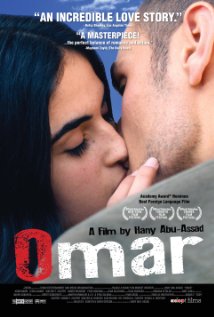 |
| Gary Cooper and Grace Kelly in High Noon |
Amy Fowler Kane: Grace Kelly
Harvey Pell: Lloyd Bridges
Helen Ramirez: Katy Jurado
Jonas Henderson: Thomas Mitchell
Percy Mettrick: Otto Kruger
Martin Howe: Lon Chaney Jr.
Sam Fuller: Harry Morgan
Frank Miller: Ian MacDonald
Jack Colby: Lee Van Cleef
Mildred Fuller: Eve McVeagh
Dr. Mahin: Morgan Farley
Jim Pierce: Robert J. Wilkie
Ben Miller: Sheb Wooley
Director: Fred Zinnemann
Screenplay: Carl Foreman
Based on a story by John W. Cunningham
Cinematography: Floyd Crosby
Production design: Rudolph Sternad
Film editing: Elmo Williams, Harry Gerstad
Music: Dimitri Tiomkin
High Noon, as has often been noted, is a movie of almost classical simplicity, adhering to the unities of place (the town of Hadleyville) and time (virtually, with perhaps only a little fudging, the runtime of the film). There are no flashbacks -- the only expository moment involves a shot of an empty chair -- and no preliminaries or codas: It begins with the wedding of Will Kane and Amy Fowler, and ends with a shot of them riding out of town. It's what makes the movie enduringly satisfying, but also what once seemed to make people want to superadd a layer of significance by interpreting it as a parable about blacklisting. That would have been inevitable anyway, since screenwriter Carl Foreman had been called before the House Un-American Activities Committee and left the country before the film was released. But it strains the tight confines of the film's narrative. Not surprisingly, High Noon took some hits from critics on the right like John Wayne, but it was also stigmatized for a long time as "pretentious." Andrew Sarris called it an "anti-populist anti-Western," but that, too, seems to me to burden the film with too much message. (Anyway, aren't Westerns, with their emphasis on wandering loners, essentially "anti-populist"?) Sixty-five years later, it's possible to view High Noon as nothing more than a neat and tidy narrative about simple heroism, which is not at all "anti-Western," a phrase that suggests far more psychological complexity than the movie possesses. Will Kane is still the good guy and Frank Miller and his gang are black-hearted baddies. If you want moral complexity, go watch The Searchers (John Ford, 1956) or The Wild Bunch (Sam Peckinpah, 1969). It's true that High Noon was overpraised at the time, winning four Oscars -- for Cooper, film editors Elmo Williams and Harry Gerstad, composer Dimitri Tiomkin for the score and, with lyricist Ned Washington, the song "High Noon (Do Not Forsake Me, Oh My Darlin')" -- and nominations for best picture, director, and screenplay. But that the Academy should even have acknowledged the virtues of a Western, a genre it typically looked down upon, is significant -- even though it reverted to its usual indifference to the genre a few years later, when it entirely ignored The Searchers.







_poster.jpg)
